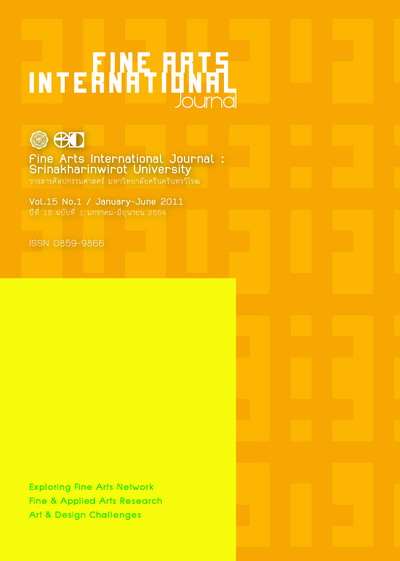Analysis of the Wrapping Culture of Ethnic Groups in Lopburi Province : A Case Study of Art Identity and Underlying Meaning
Keywords:
Wrapping culture, Ethnic Groups, Art Identity, Implied MeaningsAbstract
The province of Lopburi has prehistorically been inhabited with civilization through the eras of Dhavaravadee, Lopburi, Ayutthaya, Rattanakosin up to present. Because of various migrations from wars, economy and politics, Lopburi have had many various cultures and traditions from different traits. The influential ethic groups were Thai Phuan and Chinese.
This research aims to study wrapping culture of each influential ethnic group. Analyze art identity, and beauty of each ethnic group in Lopburi province. The research is conducted by monitoring the way of life, traditions, ceremonies, beliefs, wisdom and contextual changes of the social life of these ethnic groups. Two ethnic groups in Lopburi Province were observed : Thai Phuan group and the Chinese groupwere samples in this study.
The study has found that (1) every ethnic group in this study has its own art identity of wrapping culture and the Chinese group has most identity of art, (2) some wrapping culture has been lost from their way of life due to social, economic and politic changes, (3) some groups have preserved their wrapping cultures basically intact, i.e. the styles and materials used have not changed, (4) some wrapping cultures have deeper implied meanings such as those of the Kao Tom Mud’s, Manuscripts’ etc. (5) the art and beauty of wrapping depends on the shapes, materials, and forms, (6) the wrapping culture of every group is firmly involved with the way of life, traditions, ceremonies, and beliefs of that particular group. (7) Currently the wrapping tends to serve commercial purposes rather than a practical or traditional one. These observed groups develop their packaging with modern materials such as plastic, foam, and paper instead of using natural materials.
According to this analysis, the arts and beauty of wrapping is found more in geometric shapes than free styles. The beauty ratio comes from beliefs and theories of Thai golden section that may have derived from the royal influences. At present, the wrapping form has been used in postmodern art in the sign social contracts such as wrapping the democracy monument and pagodas.






